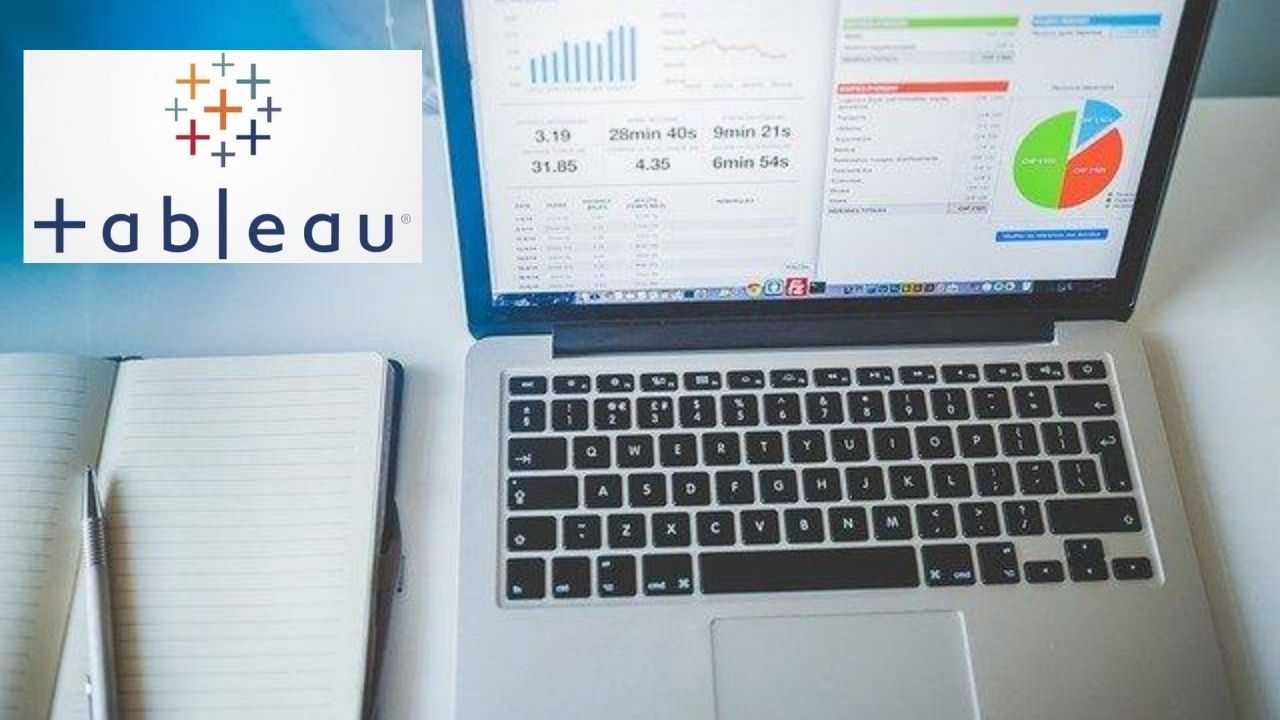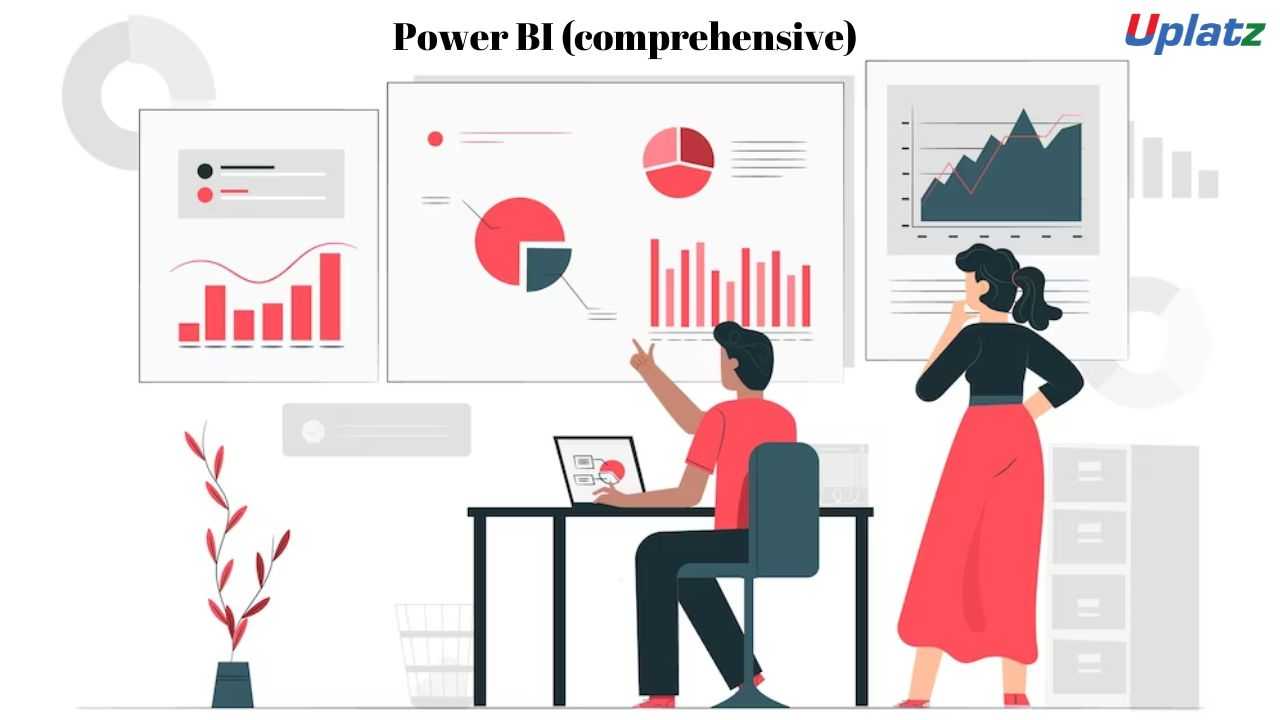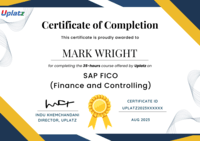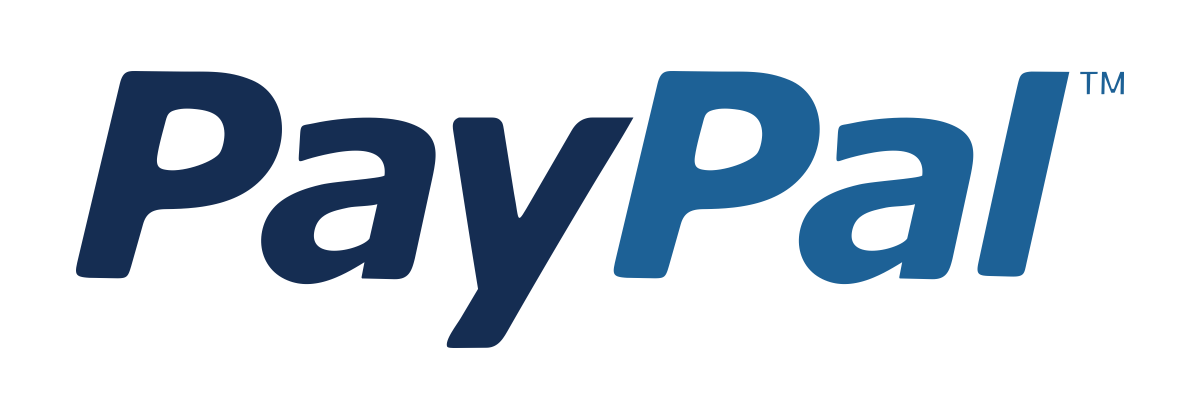Grafana
Master Grafana from scratch and learn to build dynamic, data-driven dashboards and monitoring solutions using real-world data sources
Course Duration: 10 Hours
Preview Grafana course
Price Match Guarantee Full Lifetime Access Access on any Device Technical Support Secure Checkout Course Completion Certificate 84% Started a new career
BUY THIS COURSE (
84% Started a new career
BUY THIS COURSE (GBP 12 GBP 29 )-
 97% Got a pay increase and promotion
97% Got a pay increase and promotion
Popular
Trending
Great Value
Coming soon
Students also bought -
-

- Data Visualization in R
- 10 Hours
- GBP 12
- 72 Learners
-

- Tableau
- 5 Hours
- GBP 12
- 253 Learners
-

- Power BI (comprehensive)
- 18 Hours
- GBP 12
- 471 Learners

Grafana – Build and Deploy Monitoring Solutions with Data – Online Course
Grafana - Build and Deploy Monitoring Solutions with Data is a comprehensive, self-paced online course crafted to transform aspiring data professionals, IT enthusiasts, and tech professionals into confident monitoring and visualization creators.
Whether you are just starting your data visualization journey or expanding your skillset to include robust monitoring with Grafana, this course offers a solid foundation, practical experience, and step-by-step guidance for building and deploying dynamic, real-world monitoring applications.
At its core, Grafana is an open-source analytics and monitoring solution that allows you to query, visualize, alert on, and explore your metrics, logs, and traces. Unlike complex, vendor-locked solutions, Grafana provides flexibility and control—making it an ideal choice for those who want to learn data visualization and monitoring from the ground up without unnecessary complexity. This course leverages that advantage by starting with the basics and steadily progressing to more advanced concepts, all while keeping the learning experience engaging and project-driven.
Through an in-depth, hands-on approach, this course covers everything you need to become proficient in Grafana. You'll begin with the fundamentals—setting up your environment, connecting to various data sources like Prometheus, InfluxDB, PostgreSQL, and Elasticsearch, and creating your first dashboards. As you progress, you'll build advanced visualizations, implement powerful alerting systems, integrate with external services, manage users and organizations, and even schedule reporting. By the end, you’ll learn how to prepare your Grafana instance for real-world use by deploying it to production-grade platforms like Docker, Kubernetes, or cloud servers.
What You Will Gain
By the end of the course, you will have built multiple real-world projects, such as:
- A comprehensive server monitoring dashboard with real-time metrics.
- A website performance analytics dashboard showing user traffic and error rates.
- An IoT sensor data visualization platform for real-time readings and historical trends.
- These projects aren't just for practice—they serve as portfolio-ready applications that showcase your ability to build scalable and production-ready monitoring and visualization solutions using Grafana.
But this course goes beyond building dashboards—it helps you understand how real-world data monitoring works. You'll learn how to:
- Connect your Grafana instances to various data sources including time-series databases, relational databases, and log aggregation tools.
- Use advanced query languages like PromQL for Prometheus and Flux for InfluxDB to extract meaningful insights.
- Secure your Grafana deployments through user authentication, role-based access control, and API key management.
- Optimize and debug your dashboards and data queries using Grafana’s built-in tools and community plugins.
- Structure your Grafana setup for maintainability and scalability, including provisioning and configuration as code.
- Deploy your Grafana applications to popular platforms and keep them running in production, ensuring continuous monitoring.
Whether your goal is to become a DevOps engineer, a data analyst, a system administrator, contribute to open-source monitoring projects, or simply understand how data visualization works, this course is the gateway to achieving those ambitions.
Who This Course Is For
This course is perfect for:
- Developers who want to add robust monitoring and visualization to their applications.
- Students and beginners in IT or data science looking for a structured and approachable course.
- System administrators and DevOps engineers transitioning to modern monitoring stacks.
- Entrepreneurs and freelancers who want to build and deploy their own data visualization tools.
- Tech professionals aiming to understand data aggregation, alerting, and dashboarding. Regardless of your starting point, the course is structured to take you from zero to deployment with clarity and confidence.
How to Use This Course Effectively
To maximize your learning and apply your skills effectively, follow these tips for using the course:
- Follow the Sequence The course is designed to build progressively on knowledge. Start from the first module and move forward in order. Each concept introduces new techniques while reinforcing previously learned skills. Skipping ahead may cause confusion later, especially in projects that require cumulative understanding.
- Build Alongside the Instructor Hands-on practice is essential. As you watch the video tutorials, build along in your own Grafana environment. Don’t just observe—configure the data sources, create the panels, experiment with variations, and troubleshoot errors. This repetition will solidify your learning and build real-world problem-solving skills.
- Use the Projects as Practice and Portfolio Pieces Each project you build during the course has real-world value. Customize them, add your own features, and consider documenting them or even deploying them for public access (where appropriate). These projects can become part of your portfolio when applying for jobs or freelance gigs.
- Take Notes and Bookmark Key Concepts Keep a monitoring journal. Write down important queries, panel configurations, best practices, and lessons learned. Bookmark the modules covering key concepts like alerting, data source integration, or dashboard templating for quick reference.
- Utilize the Community and Support Resources If the course offers a discussion forum, Slack group, or Q&A section, use it! Ask questions when you're stuck and help others when you can. Participating in a community will deepen your understanding and expose you to diverse perspectives and solutions.
- Explore Plugins and Documentation Grafana has a rich ecosystem of official and community-contributed plugins—for new data sources, panel visualizations, and applications. The course introduces several of them, but you’re encouraged to explore their documentation further. Developing the habit of reading official docs will make you a more independent and resourceful data professional.
- Practice Deployment Early and Often Deploying a Grafana instance, even a small one, teaches you how to troubleshoot, work with cloud platforms, and understand how monitoring solutions run in production. Don’t wait until the end of the course—try deploying after your first dashboard project. The experience is invaluable.
- Review and Revisit Data visualization and monitoring is a skill built through repetition and iteration. Don’t be afraid to revisit previous lessons or rebuild a dashboard from scratch. Each time you do, you’ll catch something new or improve your understanding.
Why Learn Grafana?
Grafana is one of the most widely-used open-source analytics and monitoring platforms because of its flexibility, extensive data source support, and powerful visualization capabilities. It’s trusted by companies of all sizes for monitoring their infrastructure, applications, and business metrics. Learning Grafana gives you complete control over your monitoring architecture while teaching you valuable concepts applicable to any modern data visualization tool.
This course not only teaches you Grafana—it empowers you to build real monitoring solutions, deploy them like a pro, and understand the entire data visualization and alerting process from data ingestion to actionable insights. It’s practical, engaging, and career-oriented. Whether you're learning Grafana for a job, a personal project, or to start a business, this course provides the foundation and confidence to succeed. Start today, and begin building the skills to create, launch, and manage your own monitoring and analytics applications with Grafana.
Course/Topic 1 - Coming Soon
-
The videos for this course are being recorded freshly and should be available in a few days. Please contact info@uplatz.com to know the exact date of the release of this course.
Course Objectives Back to Top
By the end of this course, you will be able to:
-
Understand the fundamental architecture and components of the Grafana platform.
-
Connect Grafana to various data sources like Prometheus, InfluxDB, PostgreSQL, and Elasticsearch.
-
Create dynamic and interactive dashboards using various panel types and visualization options.
-
Develop and configure robust alerting rules and notification channels.
-
Implement advanced dashboard features like variables, templating, and annotations.
-
Manage users, organizations, and permissions within Grafana.
-
Automate Grafana provisioning using configuration as code.
-
Deploy Grafana applications to platforms such as Docker, Kubernetes, or cloud servers.
-
Apply best practices for optimizing Grafana performance and securing instances in a production environment.
Course Syllabus Back to Top
Grafana Course Syllabus
Module 1: Getting Started with Grafana
- Introduction to Grafana and its Ecosystem
- Setting Up Your Environment (Local, Docker)
- Exploring the Grafana UI
Module 2: Connecting to Data Sources
- Understanding Data Sources in Grafana
- Connecting to Prometheus
- Connecting to InfluxDB
- Connecting to PostgreSQL
- Connecting to Elasticsearch/Loki
- Adding Other Data Sources
Module 3: Building Your First Dashboard
- Dashboard Fundamentals
- Creating Panels and Rows
- Visualizations: Graph, Stat, Gauge, Table
- Time Ranges and Auto-refresh
Module 4: Advanced Visualizations
- Heatmaps, Worldmap, Pie Chart
- Singlestat and Bar Gauge
- Customizing Panel Options
- Using Transformations
Module 5: Templating and Variables
- Introduction to Variables
- Query Variables
- Custom and Constant Variables
- Global Variables and Functions
- Using Variables for Dynamic Dashboards
Module 6: Alerting in Grafana
- Understanding Grafana Alerts
- Creating Alert Rules
- Notification Channels (Email, Slack, PagerDuty)
- Alert States and Evaluation
Module 7: User Management and Security
- Users, Roles, and Permissions
- Organizations and Teams
- Authentication Methods (Basic Auth, LDAP, OAuth)
- API Keys and Security Best Practices
Module 8: Grafana Provisioning and Automation
- Dashboard as Code (JSON Model)
- Data Source Provisioning
- Alerting Provisioning
- Automating Grafana Deployments
Module 9: Advanced Topics and Integrations
- Annotations and Events
- Plugins and Extensions
- Grafana Loki for Log Monitoring
- Grafana Tempo for Tracing
Module 10: Performance Optimization and Troubleshooting
- Optimizing Data Source Queries
- Dashboard Performance Tips
- Troubleshooting Common Grafana Issues
- Logging and Debugging Grafana
Module 11: Deployment and Production Setup
- Deployment Concepts (Docker, Kubernetes)
- Running Grafana in Production
- Backup and Restore Strategies
- Scaling Grafana Instances
Modules 12: Project-Based Learning
- Server and Network Monitoring Dashboard
- Application Performance Monitoring (APM) Dashboard
- Website Analytics and User Engagement Dashboard
- Home Automation/IoT Data Visualization
- Business Metrics and KPI Dashboard
Module 13: Grafana Interview Questions & Answers
- Top Interview Questions
- Best Practices and Explanations
Certification Back to Top
Upon successful completion of the course, learners will receive an industry-recognized Certificate of Completion from Uplatz that validates their skills in Grafana and data visualization. This certification serves as a powerful addition to a resume or LinkedIn profile, demonstrating a candidate’s proficiency in building monitoring solutions, integrating various data sources, and deploying production-ready Grafana instances. It helps professionals stand out in job interviews and increases credibility when applying for roles such as DevOps Engineer, Data Analyst, Site Reliability Engineer, or Monitoring Specialist. The certificate reflects both theoretical understanding and practical experience gained through hands-on projects, making learners job-ready.
Career & Jobs Back to Top
Grafana skills are in high demand in the software development and IT operations industries, especially among companies focused on observability, DevOps, and data-driven decision-making. Completing this course prepares learners for roles such as:
-
DevOps Engineer
-
Site Reliability Engineer (SRE)
-
Data Analyst
-
Monitoring Specialist
-
Cloud Engineer
-
IT Operations Specialist Professionals with Grafana skills can pursue job opportunities at tech companies, cloud service providers, consultancies, and organizations of all sizes that require robust monitoring and analytics capabilities.
Interview Questions Back to Top
-
What is Grafana and what is its primary use?Grafana is an open-source analytics and monitoring solution that allows you to query, visualize, alert on, and explore your metrics, logs, and traces. Its primary use is to create interactive and dynamic dashboards for operational intelligence.
-
Name some common data sources you can connect to Grafana.Common data sources include Prometheus, InfluxDB, Elasticsearch, Loki, PostgreSQL, MySQL, Microsoft SQL Server, Graphite, and CloudWatch.
-
How do you create a dashboard in Grafana?You create a dashboard by adding new panels. Each panel is configured to visualize data from a connected data source using specific queries and visualization types.
-
Explain the concept of "panels" in Grafana dashboards.Panels are the building blocks of Grafana dashboards. Each panel represents a specific visualization (e.g., graph, stat, table) and displays data from a query against a data source.
-
What are Grafana "variables" and why are they useful?Variables in Grafana allow you to create dynamic and interactive dashboards. They can represent values from queries, custom lists, or even global parameters, enabling users to filter and switch data views without modifying the underlying queries.
-
How do you set up an alert in Grafana?Alerts are set up on panels by defining alert conditions based on query results, specifying evaluation intervals, and configuring notification channels (e.g., email, Slack, PagerDuty).
-
What is Grafana's role in a typical monitoring stack alongside tools like Prometheus or Loki?Grafana acts as the visualization and alerting layer. Prometheus typically handles metrics collection and storage, while Loki handles log aggregation. Grafana then queries these systems to display and alert on the collected data.
-
How can you manage user access and permissions in Grafana?Grafana allows managing users, roles, and organizations. Users can be assigned different roles (Viewer, Editor, Admin) at the organization level, controlling their access to dashboards and data sources.
-
What is "provisioning" in Grafana and why is it important?Provisioning in Grafana refers to the ability to define dashboards, data sources, and alerting rules using configuration files (YAML/JSON) rather than through the UI. It's important for automation, version control, and maintaining consistency across environments.
-
How can you optimize the performance of a Grafana dashboard?Performance can be optimized by optimizing data source queries, using efficient data aggregation, limiting the number of panels and queries, setting appropriate refresh intervals, and leveraging dashboard variables effectively.
Course Quiz Back to Top
FAQs
Back to Top
Q1. What are the payment options?
A1. We have multiple payment options:
1) Book your course on our webiste by clicking on Buy this course button on top right of this course page
2) Pay via Invoice using any credit or debit card
3) Pay to our UK or India bank account
4) If your HR or employer is making the payment, then we can send them an invoice to pay.
Q2. Will I get certificate?
A2. Yes, you will receive course completion certificate from Uplatz confirming that you have completed this course with Uplatz. Once you complete your learning please submit this for to request for your certificate https://training.uplatz.com/certificate-request.php
Q3. How long is the course access?
A3. All our video courses comes with lifetime access. Once you purchase a video course with Uplatz you have lifetime access to the course i.e. forever. You can access your course any time via our website and/or mobile app and learn at your own convenience.
Q4. Are the videos downloadable?
A4. Video courses cannot be downloaded, but you have lifetime access to any video course you purchase on our website. You will be able to play the videos on our our website and mobile app.
Q5. Do you take exam? Do I need to pass exam? How to book exam?
A5. We do not take exam as part of the our training programs whether it is video course or live online class. These courses are professional courses and are offered to upskill and move on in the career ladder. However if there is an associated exam to the subject you are learning with us then you need to contact the relevant examination authority for booking your exam.
Q6. Can I get study material with the course?
A6. The study material might or might not be available for this course. Please note that though we strive to provide you the best materials but we cannot guarantee the exact study material that is mentioned anywhere within the lecture videos. Please submit study material request using the form https://training.uplatz.com/study-material-request.php
Q7. What is your refund policy?
A7. Please refer to our Refund policy mentioned on our website, here is the link to Uplatz refund policy https://training.uplatz.com/refund-and-cancellation-policy.php
Q8. Do you provide any discounts?
A8. We run promotions and discounts from time to time, we suggest you to register on our website so you can receive our emails related to promotions and offers.
Q9. What are overview courses?
A9. Overview courses are 1-2 hours short to help you decide if you want to go for the full course on that particular subject. Uplatz overview courses are either free or minimally charged such as GBP 1 / USD 2 / EUR 2 / INR 100
Q10. What are individual courses?
A10. Individual courses are simply our video courses available on Uplatz website and app across more than 300 technologies. Each course varies in duration from 5 hours uptop 150 hours.
Check all our courses here https://training.uplatz.com/online-it-courses.php?search=individual
Q11. What are bundle courses?
A11. Bundle courses offered by Uplatz are combo of 2 or more video courses. We have Bundle up the similar technologies together in Bundles so offer you better value in pricing and give you an enhaced learning experience.
Check all Bundle courses here https://training.uplatz.com/online-it-courses.php?search=bundle
Q12. What are Career Path programs?
A12. Career Path programs are our comprehensive learning package of video course. These are combined in a way by keeping in mind the career you would like to aim after doing career path program. Career path programs ranges from 100 hours to 600 hours and covers wide variety of courses for you to become an expert on those technologies.
Check all Career Path Programs here https://training.uplatz.com/online-it-courses.php?career_path_courses=done
Q13. What are Learning Path programs?
A13. Learning Path programs are dedicated courses designed by SAP professionals to start and enhance their career in an SAP domain. It covers from basic to advance level of all courses across each business function. These programs are available across SAP finance, SAP Logistics, SAP HR, SAP succcessfactors, SAP Technical, SAP Sales, SAP S/4HANA and many more
Check all Learning path here https://training.uplatz.com/online-it-courses.php?learning_path_courses=done
Q14. What are Premium Career tracks?
A14. Premium Career tracks are programs consisting of video courses that lead to skills required by C-suite executives such as CEO, CTO, CFO, and so on. These programs will help you gain knowledge and acumen to become a senior management executive.
Q15. How unlimited subscription works?
A15. Uplatz offers 2 types of unlimited subscription, Monthly and Yearly.
Our monthly subscription give you unlimited access to our more than 300 video courses with 6000 hours of learning content. The plan renews each month. Minimum committment is for 1 year, you can cancel anytime after 1 year of enrolment.
Our yearly subscription gives you unlimited access to our more than 300 video courses with 6000 hours of learning content. The plan renews every year. Minimum committment is for 1 year, you can cancel the plan anytime after 1 year.
Check our monthly and yearly subscription here https://training.uplatz.com/online-it-courses.php?search=subscription
Q16. Do you provide software access with video course?
A16. Software access can be purchased seperately at an additional cost. The cost varies from course to course but is generally in between GBP 20 to GBP 40 per month.
Q17. Does your course guarantee a job?
A17. Our course is designed to provide you with a solid foundation in the subject and equip you with valuable skills. While the course is a significant step toward your career goals, its important to note that the job market can vary, and some positions might require additional certifications or experience.
Remember that the job landscape is constantly evolving. We encourage you to continue learning and stay updated on industry trends even after completing the course. Many successful professionals combine formal education with ongoing self-improvement to excel in their careers. We are here to support you in your journey!
Q18. Do you provide placement services?
A18. While our course is designed to provide you with a comprehensive understanding of the subject, we currently do not offer placement services as part of the course package. Our main focus is on delivering high-quality education and equipping you with essential skills in this field.
However, we understand that finding job opportunities is a crucial aspect of your career journey. We recommend exploring various avenues to enhance your job search:
a) Career Counseling: Seek guidance from career counselors who can provide personalized advice and help you tailor your job search strategy.
b) Networking: Attend industry events, workshops, and conferences to build connections with professionals in your field. Networking can often lead to job referrals and valuable insights.
c) Online Professional Network: Leverage platforms like LinkedIn, a reputable online professional network, to explore job opportunities that resonate with your skills and interests.
d) Online Job Platforms: Investigate prominent online job platforms in your region and submit applications for suitable positions considering both your prior experience and the newly acquired knowledge. e.g in UK the major job platforms are Reed, Indeed, CV library, Total Jobs, Linkedin.
While we may not offer placement services, we are here to support you in other ways. If you have any questions about the industry, job search strategies, or interview preparation, please dont hesitate to reach out. Remember that taking an active role in your job search process can lead to valuable experiences and opportunities.
Q19. How do I enrol in Uplatz video courses?
A19. To enroll, click on "Buy This Course," You will see this option at the top of the page.
a) Choose your payment method.
b) Stripe for any Credit or debit card from anywhere in the world.
c) PayPal for payments via PayPal account.
d) Choose PayUmoney if you are based in India.
e) Start learning: After payment, your course will be added to your profile in the student dashboard under "Video Courses".
Q20. How do I access my course after payment?
A20. Once you have made the payment on our website, you can access your course by clicking on the "My Courses" option in the main menu or by navigating to your profile, then the student dashboard, and finally selecting "Video Courses".
Q21. Can I get help from a tutor if I have doubts while learning from a video course?
A21. Tutor support is not available for our video course. If you believe you require assistance from a tutor, we recommend considering our live class option. Please contact our team for the most up-to-date availability. The pricing for live classes typically begins at USD 999 and may vary.









